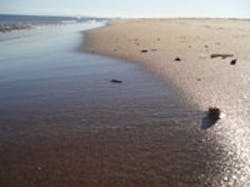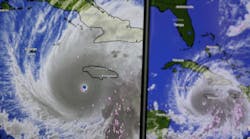States Get Creative to Reduce Beach Water Bacteria Levels
As dangerously high bacteria levels become a more common problem for U.S. beaches, many states are testing and implementing new strategies to protect swimmers' health and reduce beach bacteria.
A number of states are focusing on obtaining faster test results for the presence of harmful pathogens in beach water. Health officials, who typically wait about 24 hours for lab test results, want to post warnings to swimmers in as timely a fashion as possible.
California and New Jersey are piloting testing methods that could provide test results within four hours, according to the Natural Resources Defense Council's (NRDC) 2007 beach water quality report.
Communities in seven states--Indiana, Maryland, New Hampshire, New York, Ohio, South Carolina and Wisconsin--are currently using or developing computer models to predict beach bacteria concentrations in about an hour, according to the NRDC report. The models would measure conditions such as rainfall, wind speed, tides and wave height in predicting beach bacteria levels.
Rather than waiting 24 hours for water sampling results, coastal communities can preemptively close a beach or post swimming advisories due to excessive rainfall or for other reasons, such as a sewage spill. According to NRDC-compiled data, communities in the following states exercised this authority last year: California, Connecticut, Delaware, Hawaii, Indiana, Maryland, Massachusetts, Mississippi, New Jersey, New York, Pennsylvania, Rhode Island, South Carolina, Washington and Wisconsin.
California is initiating the nation's most aggressive and costly monitoring efforts. "California takes twice as many samples than the next most-sampled state, Florida, and we sample at ankle depth so that we're being more protective of where children play," said Michael Gjerde, beaches coordinator for the state's Water Resources Control Board.
Delaware surfers are also working hard to keep their beaches and water safe. For the second consecutive year, volunteers are planning to collect water samples during the offseason, when the state's water collection program is on hiatus. They then send samples to a local university lab for testing.
Storm water runoff is a huge factor in protecting beach swimming areas. Communities nationwide are trying different methods to keep runoff from spilling into these fragile ecosystems.
North Myrtle Beach, S.C., invested approximately $45 million in extending three storm water pipes 1,000 ft from the beach. The pipes had been emptying animal and human waste-contaminated pond water directly onto the beach, said Department of Health and Environmental Control program coordinator Shannon Berry.
Officials in Kure Beach, N.C., are diverting storm water to a dunes area where sand acts like a natural filter, and in Racine, Wis., new wetlands at North Beach now filter storm water.
Finally, county officials in Grand Haven, Mich., have banned the use of most fertilizer containing phosphorous to keep it from entering waterways and promoting algae blooms.
Source: USA Today


